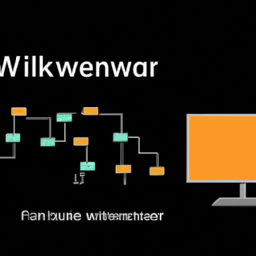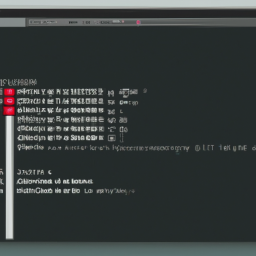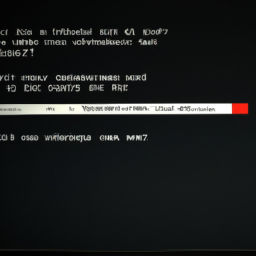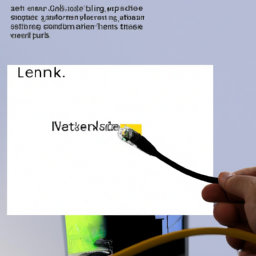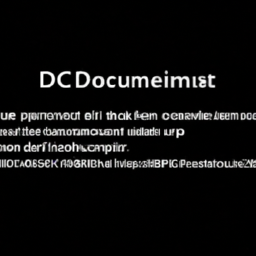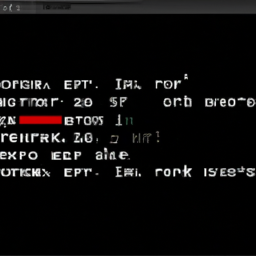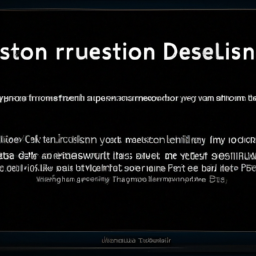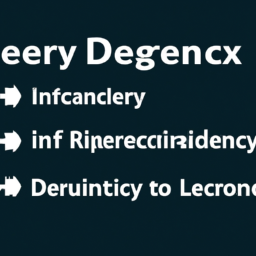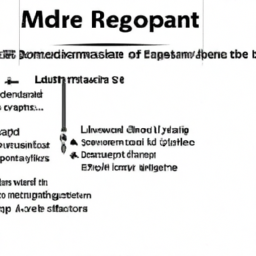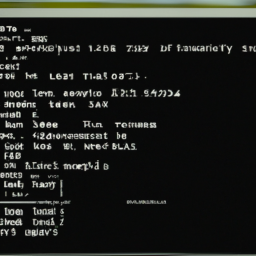In the vast realm of Linux networking, the flow of data is akin to a steady stream of packets, each containing crucial information. However, imagine a scenario where some of these packets mysteriously disappear along the way, leading to disruptions, slow connections, and frustrating network experiences.
This phenomenon, known as ‘packet loss,’ can be a formidable adversary for Linux users. But fear not, for in this article, we will unveil proven methods to fix this error and restore the harmony of your network.
By delving into the depths of network configuration settings, updating drivers, testing hardware, utilizing monitoring tools, and adjusting network parameters, you will be armed with the knowledge and tools to combat packet loss head-on.
So, tighten your digital armor and embark on this technical journey to conquer the elusive ‘packet loss’ error in Linux networking.
Key Takeaways
- Troubleshoot DNS issues as the first step in resolving packet loss.
- Analyze network traffic patterns to identify bottlenecks and congestion points.
- Update network drivers to improve performance and reduce packet loss.
- Use network monitoring tools like Wireshark and PingPlotter to identify and address packet loss issues.
Check Network Configuration Settings
Take a look at your network configuration settings to ensure they’re properly set up and not causing any packet loss issues. Troubleshooting DNS issues should be the first step in this process. Check if your DNS settings are correctly configured and if there are any issues with resolving domain names.
Additionally, analyzing network traffic patterns can help identify any potential bottlenecks or congestion points that could be causing packet loss. Look for any unusual patterns or spikes in network traffic that may indicate a problem.
Once you’ve checked and resolved any configuration or DNS issues, it’s time to move on to the next step: updating your network drivers. This’ll ensure you have the latest drivers installed, which can help improve network performance and reduce packet loss.
Update Network Drivers
Improve your network performance by easily updating your network drivers. Troubleshooting techniques often involve checking for outdated or malfunctioning drivers, which can contribute to packet loss. Updating your network drivers ensures that you have the latest bug fixes and performance optimizations, providing a stable and efficient network connection.
Start by identifying the manufacturer and model of your network adapter, then visit their website to download the latest drivers. Follow the installation instructions carefully, and don’t forget to restart your system after the update.
Once your network drivers are up to date, you can proceed to the next section and test your network hardware for any potential issues.
Test Network Hardware
After updating your network drivers, it’s time to put your network hardware to the test and ensure everything is running smoothly.
Start by troubleshooting network cables. Inspect them for any visible damage or loose connections. Replace any faulty cables and make sure they’re properly plugged in.
Next, test network latency to identify any potential issues. Use tools such as ping or traceroute to measure the time it takes for data packets to travel between devices. High latency could indicate problems with your network hardware or configuration.
Once you’ve completed these tests, you can move on to the next section about using network monitoring tools to further diagnose and resolve any packet loss errors.
Use Network Monitoring Tools
To ensure the smooth operation of your network, you can utilize network monitoring tools to keep a close eye on your connections and detect any potential issues. One useful tool for troubleshooting packet loss is Wireshark. By capturing and analyzing network traffic, Wireshark can help you identify the source of packet loss and take appropriate action.
Additionally, you can analyze network performance using PingPlotter. This tool allows you to monitor network latency, packet loss, and jitter over time, helping you pinpoint any performance issues.
By using these network monitoring tools, you can proactively identify and address packet loss problems in your Linux networking setup.
In the next section, we will discuss how to adjust network settings to further optimize your network performance.
Adjust Network Settings
By fine-tuning your network settings, you can unlock the full potential of your Linux networking setup, creating a seamless and efficient user experience.
Here are some steps you can take to optimize your network settings:
-
Optimize firewall: Review and configure your firewall settings to allow necessary network traffic while blocking potential threats. This will help improve network performance and reduce packet loss.
-
Disable unnecessary network services: Identify and disable any unnecessary network services or protocols that aren’t required for your specific setup. This will free up network resources and reduce the chances of packet loss.
Remember, adjusting your network settings requires technical expertise and understanding of your specific network setup. If you’re unsure or encounter difficulties, it’s always advisable to seek professional help. This will ensure that any changes you make are appropriate and don’t cause further issues.
Seek Professional Help if Necessary
If you’re uncertain or encounter difficulties, it’s always advisable to seek professional help to ensure appropriate changes are made without causing further issues. Troubleshooting common network errors requires a deep understanding of the impact of packet loss on network performance.
Professionals who specialize in Linux networking can provide expert guidance and assistance in fixing packet loss errors. They have the technical knowledge and experience to accurately diagnose the issue, identify any underlying problems, and implement effective solutions.
By seeking professional help, you can avoid wasting time and effort on trial and error methods that may not provide a satisfactory resolution. Additionally, professionals can offer valuable insights and recommendations to optimize your network settings and minimize the risk of future packet loss occurrences.
Frequently Asked Questions
What are the common causes of packet loss in Linux networking?
Network congestion and network latency are two common causes of packet loss in Linux networking. When the network becomes congested, the amount of traffic exceeds its capacity, leading to packets being dropped.
Network latency, on the other hand, refers to the delay in transmitting data. High latency can result in packets arriving out of order or being discarded altogether.
Understanding and mitigating these factors is crucial in minimizing packet loss and ensuring smooth network communication.
How can I determine if packet loss is occurring on my Linux network?
To determine if packet loss is occurring on your Linux network, there are several ways to measure its severity. You can use tools like ping or traceroute to send test packets and analyze the response times.
Additionally, network monitoring tools such as Wireshark or tcpdump can capture and analyze network traffic to identify any dropped packets. Packet loss can significantly impact the performance of applications and services in a Linux network, leading to degraded user experience and decreased throughput.
What are some potential solutions for reducing or eliminating packet loss in Linux networking?
To reduce or eliminate packet loss in Linux networking, you can employ various packet loss mitigation techniques. One effective approach is to delve into network congestion control algorithms, which help manage and regulate data flow. By understanding these algorithms, such as TCP Reno or TCP Cubic, you can optimize their parameters to minimize packet loss.
Additionally, implementing Quality of Service (QoS) mechanisms and prioritizing critical traffic can also improve network performance and mitigate packet loss.
Are there any specific Linux distributions or versions that are more prone to packet loss issues?
Linux distributions can vary in their susceptibility to packet loss issues. However, it’s important to note that the presence of packet loss can be influenced by a variety of factors, including network configuration and hardware. To identify and troubleshoot packet loss, network monitoring tools like Wireshark or PingPlotter can be utilized. These tools allow you to analyze network traffic, pinpoint potential issues, and make informed decisions about optimizing your network performance.
Can packet loss in Linux networking be caused by hardware limitations or failures?
Packet loss in Linux networking can indeed be caused by hardware limitations or failures. If you’re experiencing packet loss, it’s important to first rule out any hardware issues.
Troubleshooting steps should include checking the network cables for any physical damage or loose connections. Testing the network interface card (NIC) for errors or malfunctions and ensuring that the router or switch is functioning properly. By addressing these hardware limitations, you can improve the overall network performance and reduce packet loss.
Conclusion
Congratulations! You’ve successfully navigated the treacherous waters of Linux networking and conquered the dreaded ‘packet loss’ error. By following the proven methods outlined in this article, you’ve become a master of network troubleshooting.
With precise configuration settings, updated drivers, thorough hardware testing, and the aid of monitoring tools, you’ve tamed the beast that is packet loss.
But remember, if you ever find yourself in deep waters again, don’t hesitate to seek the guidance of a professional. Happy networking!




